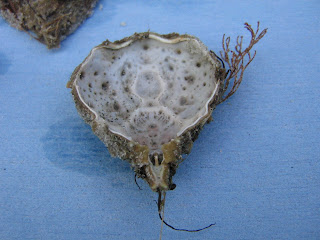


Here is the dead pufferfish I was telling you about! It's actually called a spiny boxfish. It's about 6 inches long. It was quite stinky, and I nicked myself with a spine. :(
This blog is for observing, reporting, and identifying animals in the gated community of Sea Pines, Hilton Head Island, South Carolina. This website gives identification of animals sighted, animal book recommendations,and so on. Please report animals you've seen in Sea Pines, describe them, and I'll identify them as best I can. If I can't find out the name or identification of a certain animal, and you know about it, please comment and tell me about it!








